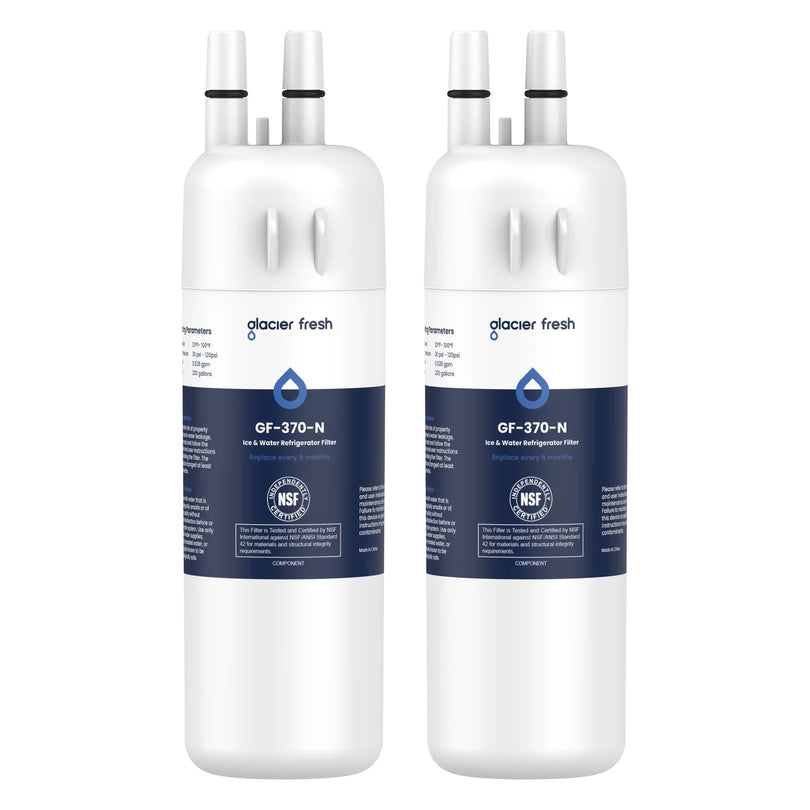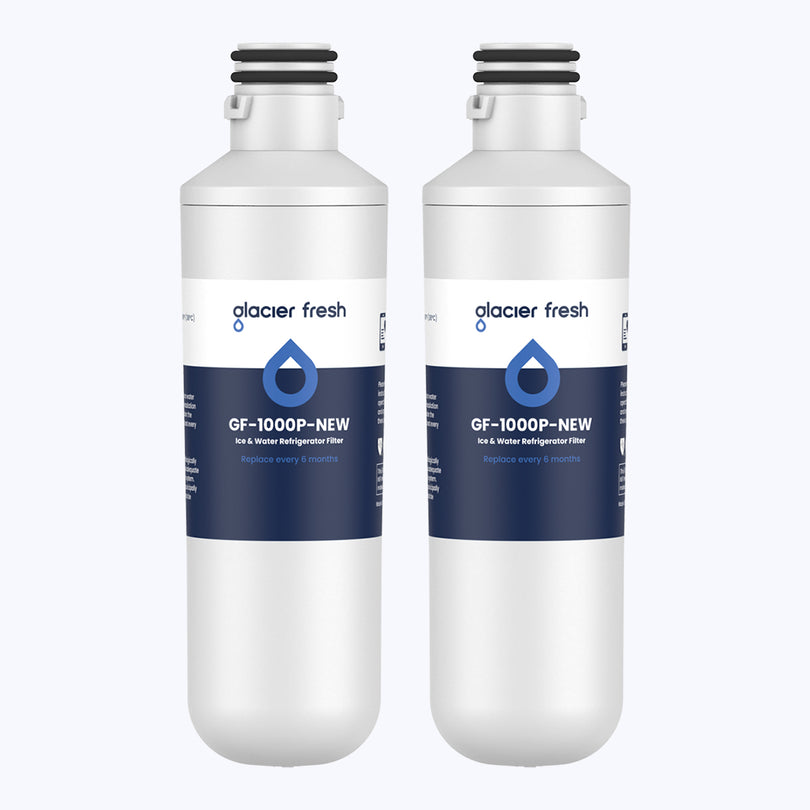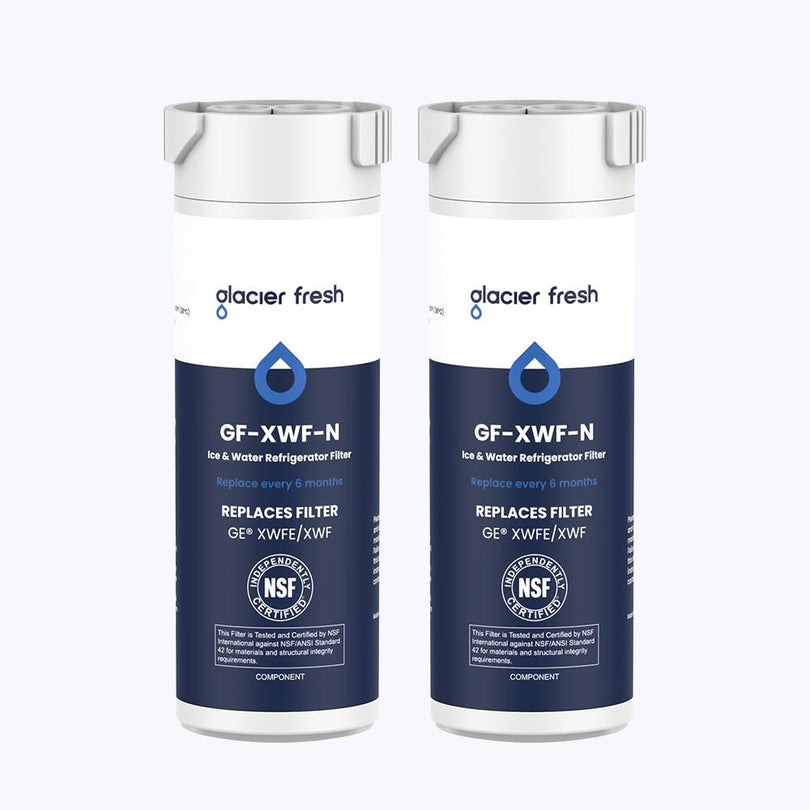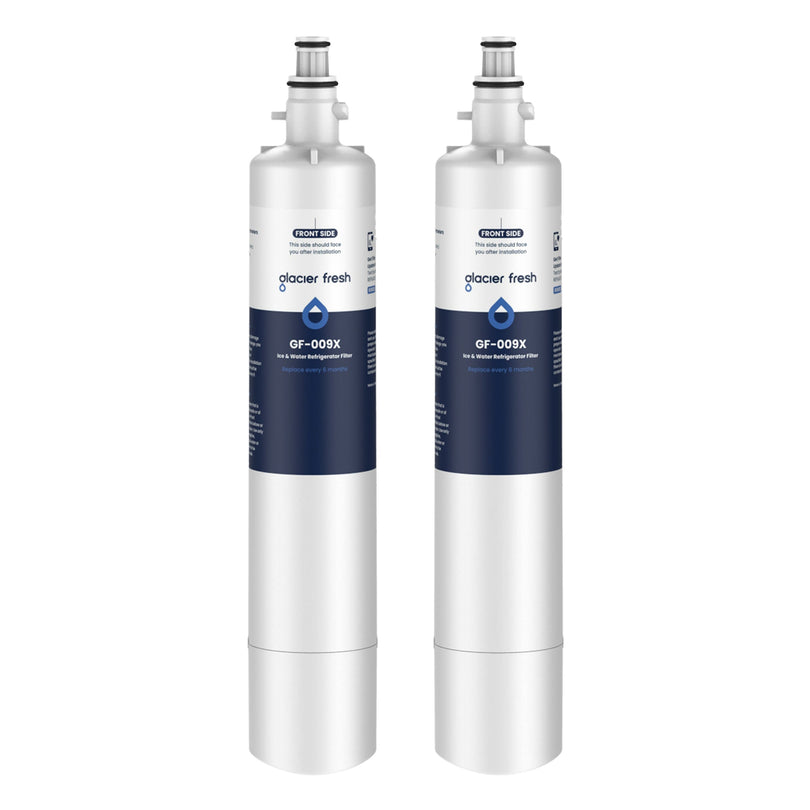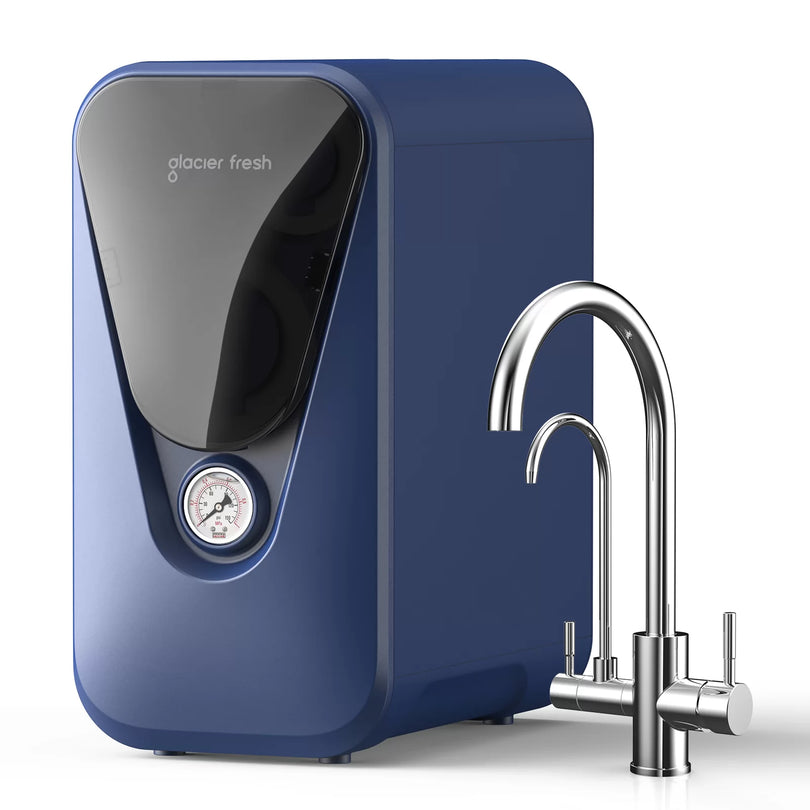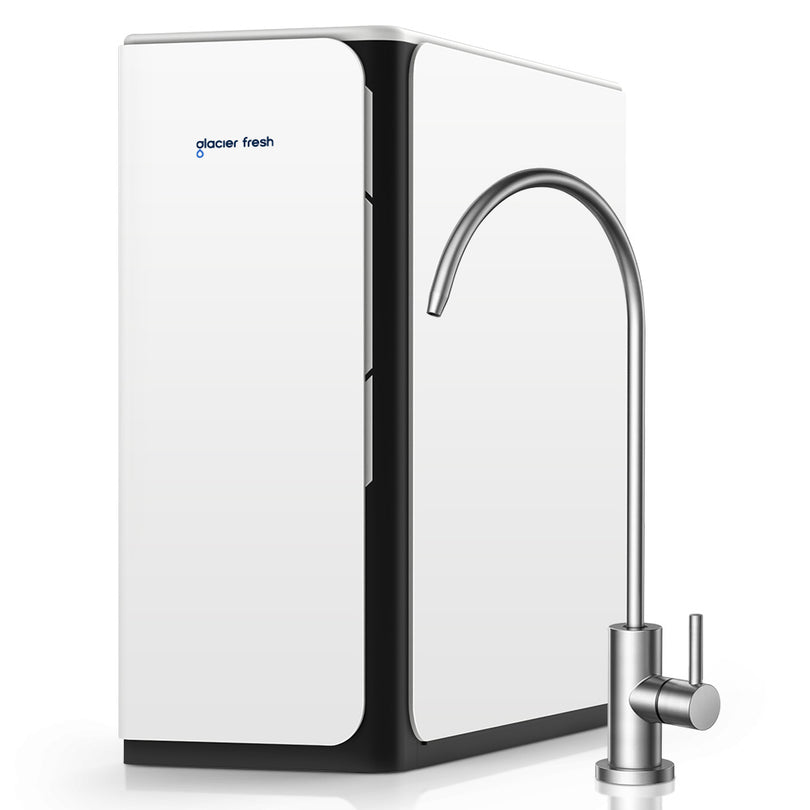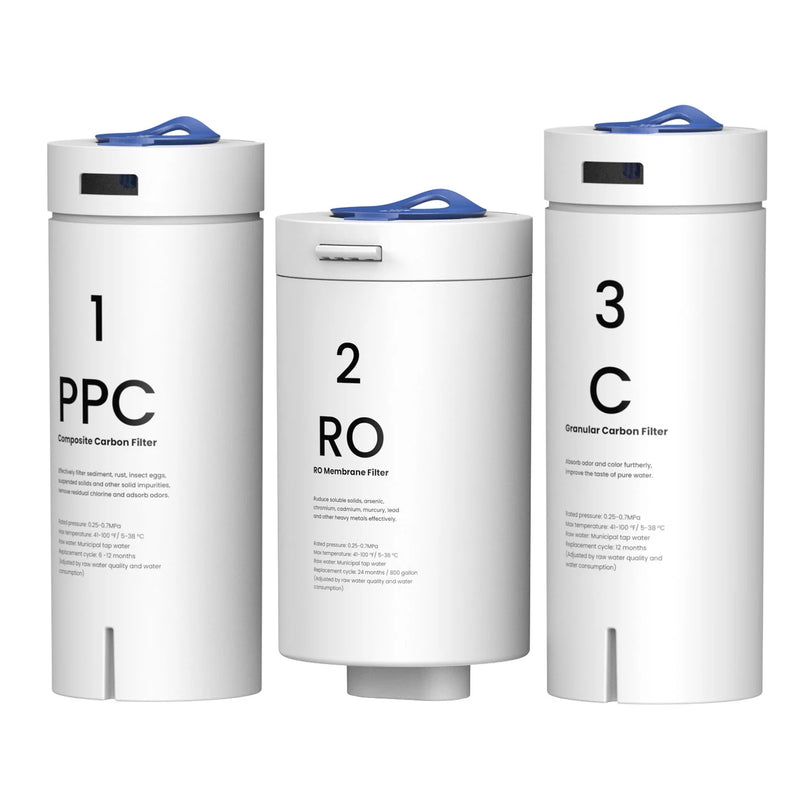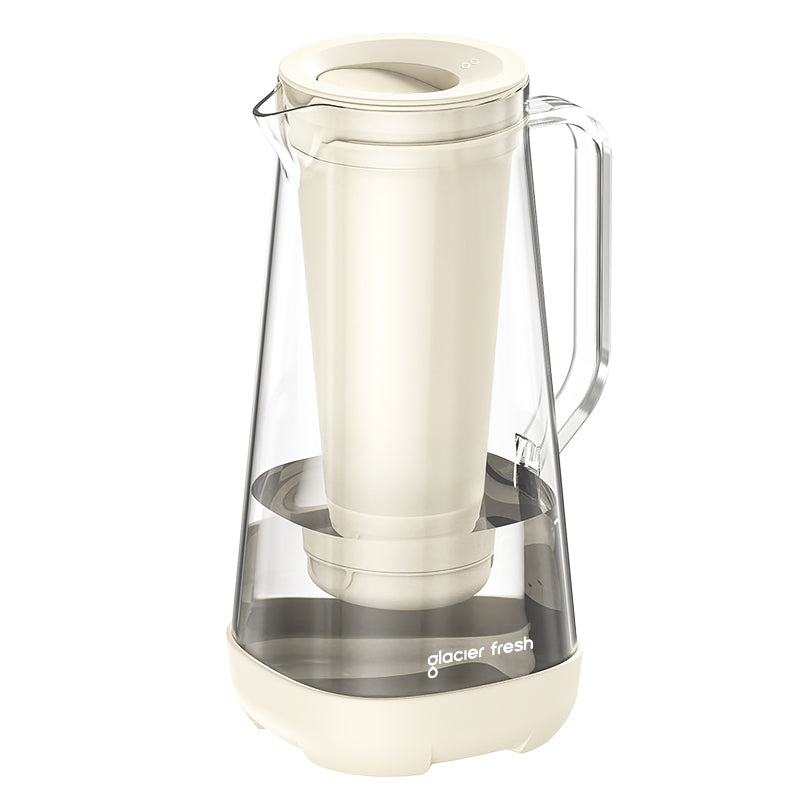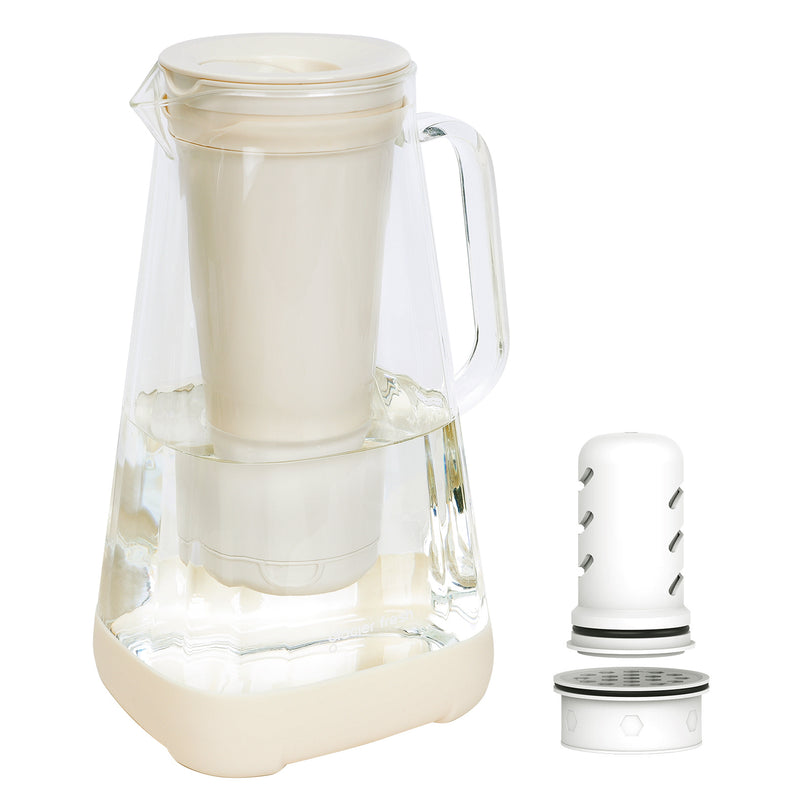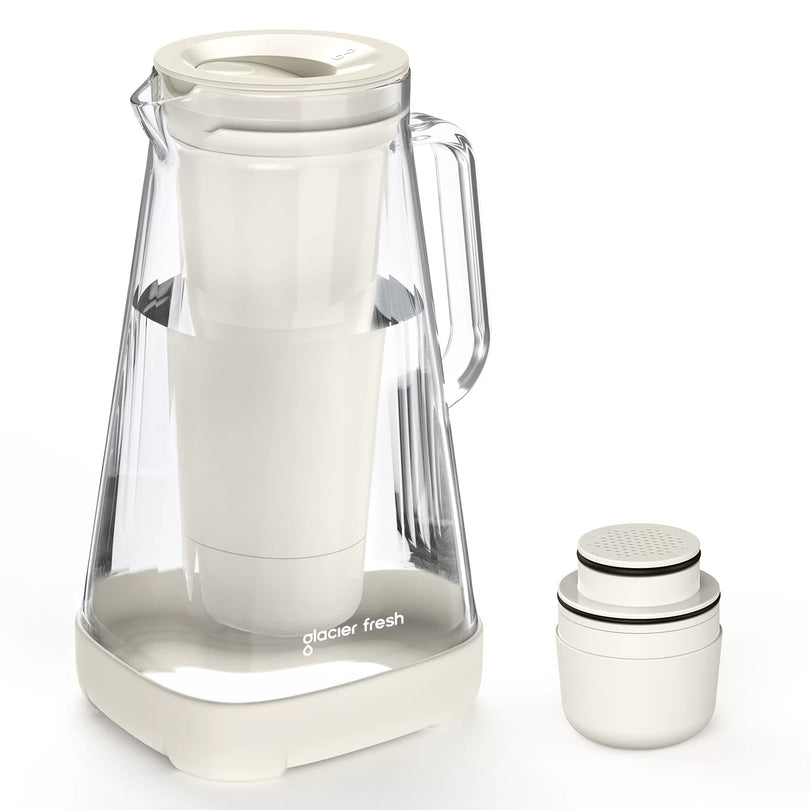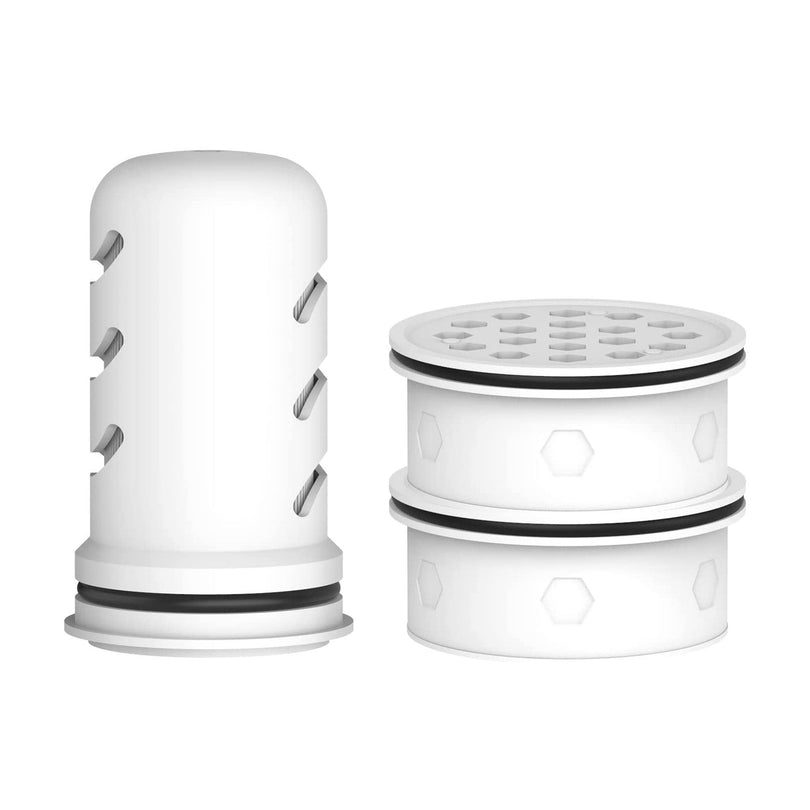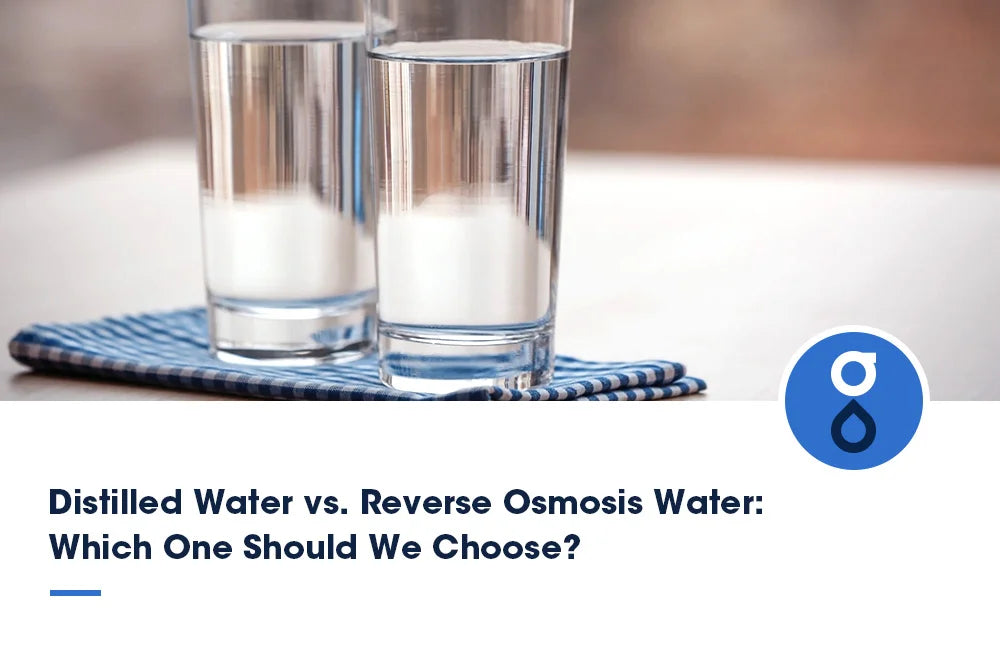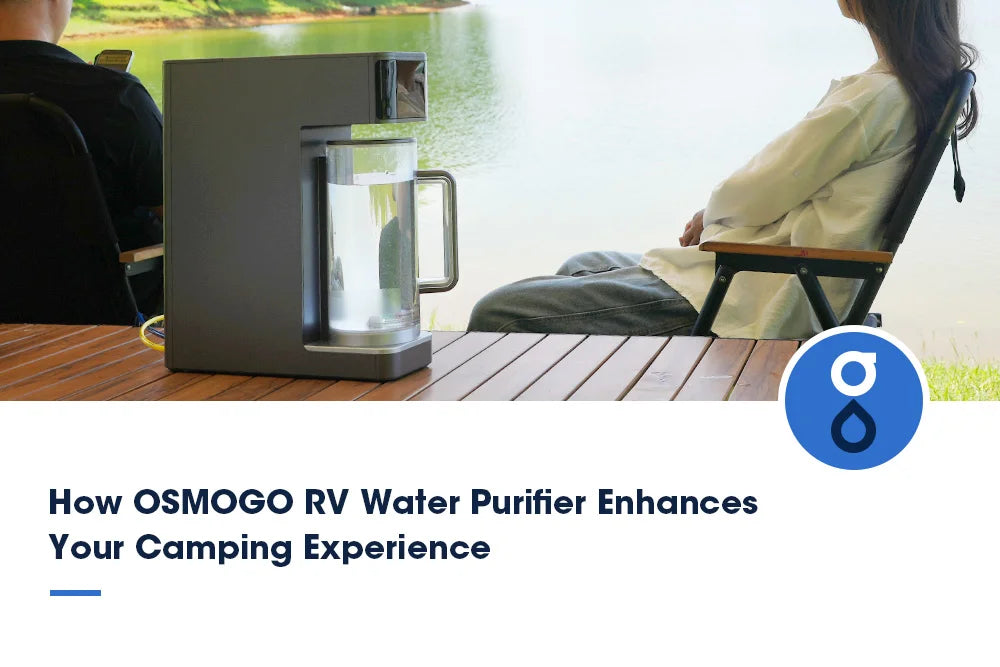Table of Contents:
Die Wasserqualität steht in direktem Zusammenhang mit unserer Gesundheit. Angesichts der Vielzahl an Filtertechniken ist es schwierig zu wissen, welche die beste für den täglichen Gebrauch ist. Zu den am häufigsten verwendeten gehören destilliertes Wasser und Umkehrosmosewasser. Beide haben das Ziel, Verunreinigungen zu entfernen, doch Verfahren, Vorteile und Eignung für den täglichen Gebrauch unterscheiden sich stark.
Manche bevorzugen destilliertes Wasser aufgrund seiner Reinheit; Umkehrosmosewasser (RO) wird von anderen aufgrund seiner ausgewogenen Filterung und seines guten Geschmacks bevorzugt. RO-Wassersysteme erfreuen sich in den letzten Jahren als Systeme für den Heimgebrauch zunehmender Beliebtheit. Welches ist also die richtige Wahl? Wir vergleichen sie im Detail, um die Antwort zu finden.
Was ist destilliertes Wasser?

Destilliertes Wasser wird durch Kochen (Dampf) und anschließendes Kondensieren (zur Flüssigkeit) hergestellt, wobei viele Mineralien, Salze und andere Verunreinigungen zurückbleiben. Diese Technologie ist unglaublich effizient bei der Entfernung von Verunreinigungen wie Schwermetallen, Krankheitserregern und löslichen Feststoffen.
Die hohe Reinheit von destilliertem Wasser beinhaltet jedoch auch Mineralien, die üblicherweise in Quellwasser vorkommen oder durch andere Filterverfahren erhalten bleiben, wie etwa Kalzium und Magnesium, die in ultrareinem destilliertem Wasser ebenfalls fehlen. Dies kann zu einer faden oder geschmacklosen Konsistenz und einem faden Geschmack führen und somit für andere unangenehm sein. Da das Destillationsverfahren zudem energieintensiv und aufwendig ist, ist es nicht unbedingt die bequemste Option, wenn Haushalte täglich große Mengen Wasser verbrauchen.
Für spezielle Anwendungen wird destilliertes Wasser oft bevorzugt, beispielsweise für Labor- und medizinische Geräte sowie Dampfbügeleisen, da das Wasser keine Mineralien enthält und dadurch Kalkablagerungen und Ablagerungen vermieden werden. Für den täglichen Gebrauch ist es wahrscheinlich weder das praktischste noch das leckerste Getränk.
Was ist Umkehrosmosewasser?
Umkehrosmosewasser wird hergestellt, indem das Wasser durch eine semipermeable Membran gepresst wird, die bis zu 99,99 % der nicht reinen Substanzen wie Schwermetalle, Chemikalien, Pestizide und Mikroorganismen entfernt. Dieser Prozess trägt auch dazu bei, den Gesamtgehalt an gelösten Feststoffen (TDS) auf ein Niveau zu senken, das die Einhaltung oder Übererfüllung der Trinkwasserqualitätsstandards gewährleistet.
Anders als bei der Destillation erfolgt die RO-Filtration ohne Kochen und ist daher energieeffizienter und schneller. Moderne ROs verfügen über deutlich mehr Filterstufen als das Vorgängermodell: Sedimentfilter, Aktivkohlefilter und eine RO-Membran. Einige Modelle verfügen zudem über Nachfilter zur Geschmacksverbesserung.
Was ist der Unterschied zwischen ihnen?
Obwohl beide Verfahren sauberes Wasser liefern, gibt es erhebliche Unterschiede:
-
Verfahren: Destillation und Umkehrosmose nutzen Verdampfungs- und Kondensationsprozesse sowie Druck, um Wasser durch eine Membran zu filtern. RO ist im Alltag bequemer und schneller anwendbar.
-
Schmecken: RO-Wasser schmeckt aufgrund seines ausgewogenen Mineralstoffprofils, das auf der Systemkonstruktion beruht, im Allgemeinen frischer, während destilliertes Wasser keine Mineralien enthält und fade schmecken kann.
-
Effizienz: Die Destillation verbraucht viel Energie, da sie über einen längeren Zeitraum viel Wärme benötigt. Die Umkehrosmose benötigt weniger Energie, insbesondere bei der neuen nichtelektrischen Umkehrosmose.
-
Mineralgehalt: Destilliertes Wasser entfernt fast alle Mineralien. RO-Wasser entfernt unerwünschte, schädliche Verunreinigungen, kann aber so modifiziert werden, dass gesunde Mineralien erhalten bleiben oder hinzugefügt werden.
-
Anwendungsfälle: Destilliertes Wasser eignet sich hervorragend für Haushaltsgeräte, Labore und die Medizin, wo mineralfreies Wasser benötigt wird. RO-Wasser eignet sich besser als Trinkwasser und zum Kochen.
Welches sollten wir wählen?
Im Alltag wird Umkehrosmosewasser bevorzugt. Destilliertes Wasser ist zwar rein, enthält aber keine Mineralien und schmeckt fade, was den täglichen Konsum unangenehm macht. RO-Wasser ist ein Kompromiss: Es befreit von schädlichen Schadstoffen und liefert sauberes, wohlschmeckendes Wasser, das angenehm zu trinken ist.
Glacierfresh U03 spricht sich für die Umkehrosmose aus. Die 800-GPD-Umkehrosmoseanlage verfügt über einen innovativen 5-Stufen-Filter, der bis zu 99,99 % der Verunreinigungen wie Blei, Fluorid, PFAS und Bakterien entfernt. Gleichzeitig ist sie äußerst effizient und produziert mehr gereinigtes Wasser bei einem Bruchteil des Abfalls im Vergleich zu älteren Systemen. Darüber hinaus ist die kleine, durchlauferhitzende Konstruktion kompakt und passt unter Ihre Küchenspüle. Die Installation erfordert keinen Klempner und dauert nur 20 Minuten.
Ein RO-System ist eine ideale gesundheitsbewusste Alternative zu Flaschenwasser, insbesondere wenn die Familie gerne große Mengen sauberes, frisch schmeckendes Trinkwasser mitnimmt, ohne nach so vielen Nachfüllungen neue Behälter nach Hause schleppen zu müssen.
So wählen Sie ein gutes RO-Wassersystem aus
Berücksichtigen Sie beim Kauf eines Umkehrosmosesystems folgende Faktoren:
Filtrationsstufen
Mehr Stufen bedeuten im Allgemeinen eine bessere Filterung. Suchen Sie nach Systemen, die Sediment-, Kohlenstoff- und RO- Wasserfilter für eine umfassende Reinigung kombinieren.
Wasserproduktionsrate
Wählen Sie ein System, das den Anforderungen Ihres Haushalts gerecht wird. Der Glacierfresh U03 liefert bis zu 800 Gallonen pro Tag, mehr als genug für eine kleine bis mittelgroße Familie.
Effizienz
Überprüfen Sie das Verhältnis von Reinwasser zu Abwasser, um Wasserverschwendung zu minimieren. Das Verhältnis von 3:1 des U03 gehört zu den besten auf dem Markt.
Einfache Installation und Wartung
Ein gutes RO-System sollte selbst zu bauen sein und über leicht austauschbare Filter verfügen. Der Filterwechsel beim U03 ist unkompliziert: Der PPC-Filter hält etwa 6 Monate und die RO-Membran bis zu 2 Jahre.
Verarbeitungsqualität und Zertifizierungen
Wählen Sie Systeme, die von renommierten Organisationen wie NSF oder SGS zertifiziert sind, um Sicherheit und Leistung zu gewährleisten.
Design und Platzbedarf
Kompakte, tanklose Systeme sparen Platz und passen problemlos unter die Spüle, wodurch die Masse älterer tankbasierter Modelle entfällt.
Abschluss
Sowohl destilliertes Wasser als auch Umkehrosmosewasser können verwendet werden, doch für den täglichen Gebrauch ist Umkehrosmosewasser die bessere Wahl. Es schmeckt besser, ist effektiver gefiltert und praktischer, da es einen kontinuierlichen Durchfluss bei minimalem Energieaufwand während des Destillationsprozesses bietet.
Durch den Einsatz hochentwickelter Systeme wie der Mit dem Untertisch-RO-System Glacierfresh U03 genießen Sie frisches, sauberes Wasser aus Ihrem Wasserhahn, ohne dass es Schadstoffe enthält. Ob Sie nun Flaschenwasser ersetzen oder eine gesunde Alternative zu Leitungswasser suchen – die Investition in ein hochwertiges RO-System ist eine Entscheidung, die Ihnen sowohl gesundheitlich als auch ökologisch zugutekommt.
Weiterführende Literatur:

